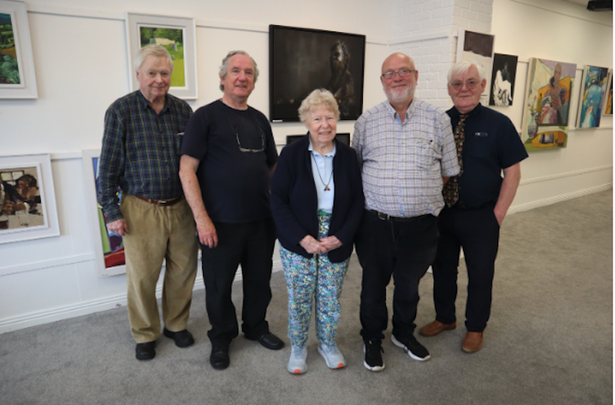Following the closure of the Quinnipiac Ireland's Great Hunger Museum, in Connecticut, Irish academics and artists have declared their support for the Bord's ongoing efforts to preserve the art collection.
In 2018, under the leadership of former President John L. Lahey, Quinnipiac University embarked on a remarkable cultural endeavor to reunite Ireland's Great Hunger treasures with their homeland for a limited visit. The university's museum in Hamden, Connecticut, became the custodian of a collection that reverberated with Ireland's rich past and thriving diaspora.
Dr. Lahey emphasized the profound significance of this exhibition, that it represented a vital act of cultural reconnection with Ireland. It captured the attention of local, national, and international audiences, positioning itself as a major cultural and educational event. The exhibition proudly showcased the works of numerous living Irish artists, and it traveled to three prestigious venues: Dublin Castle, West Cork Arts Center in Skibbereen, and Cultúrlann Uí Chanáin in Derry. The warmth and enthusiasm of over 100,000 visitors welcoming the artwork back to its roots was truly heartening.
However, in 2020, following a change in the university's administration, the museum was unfortunately forced to close its doors. Consequently, the collection, which encompassed contemporary Irish and Irish American art alongside notable 19th-century paintings by Irish artists, now lies dormant, packed away in crates. The Office of Attorney General William Tong in Connecticut has assumed the responsibility of overseeing plans for transferring the collection to a suitable new entity. This legal process will ensure meticulous oversight of any changes in the administration of the charitable trust.
Ireland's Great Hunger Bord, an organization born out of the Save Ireland's Great Hunger Museum group, initially sought to collaborate with the university to assume responsibility for the museum's administration at its current Quinnipiac campus location. Regrettably, that offer was declined. Nonetheless, the IGHB organization diligently monitors the ongoing transfer process, which has yet to find a resolution. In a recent statement, the Bord expressed hope that the attorney general's commitment to preserving the collection's future disposition would remain steadfast.
Throughout this ongoing effort, the IGHB has maintained communication with the artists whose works form part of the collection. Esteemed Irish historian Dr. Catherine B. Shannon, Professor Emerita of History at Westfield State University and a member of IGHB, has been actively engaging with several artists, academics, and historians during her recent visit to Ireland. She participated in various events associated with the 2023 Strokestown Park National Famine Summer School in County Roscommon where she met Ireland’s Ambassador to Canada, Dr Eamonn McKee and filmmaker Lance Daly whose film "Black ’47" was screened on the opening night of the conference. Dr Shannon attended receptions organized by fellow IGHB member Ronan King, in Dublin, as well as at Kenny's Art Gallery in Galway where she co-presented with supporter and historian Dr Gerard Moran, University of Galway.
Tom Kenny and Dean Kelly from Kenny's Gallery extended a heartfelt invitation to all the artists who had previously signed their names in support of the mission to save the museum. Among the notable individuals she met were artists John Behan and Pádraic Reaney, who were present at the Galway event.
Behan, renowned for creating Ireland's National Memorial to the Great Hunger in Murrisk, County Mayo in 1997, expressed a deep interest in mobilizing not only the artists but also influential figures in the media, academia, and cultural institutions to safeguard the collection. Artist Pádraic Reaney, who represented Ireland in a major international exhibition commemorating the 75th anniversary of the United Nations, echoed Behan's sentiments.
During her travels and at the Summer School, Dr Shannon met with many historians and academics including Dr Michael Doorley who acknowledges the pivotal role of the Famine in Irish American history.
“As a historian specializing in the Irish diaspora in America, I strongly encourage support for the Museum of Ireland's Great Hunger Bord in their endeavor to preserve the Collection.”
For more information visit www.IGHBord.org.




Comments